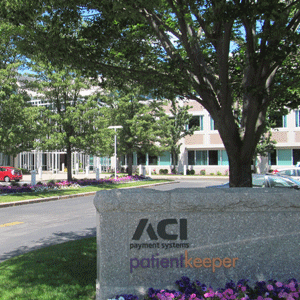THANK YOU FOR SUBSCRIBING

Five Principles for Designing a Successful Next Generation Data Center
Rick Scurfield, SVP and GM-Apac, NetApp


Rick Scurfield, SVP and GM-Apac, NetApp
The data center is undergoing a rapid evolution in response to tectonic shifts impacting computing today. Disruption in the industry and changing workload demands are forcing IT departments to relook and reorganize their infrastructure, as IT management and implementation practices of the last decade are no longer competitive.
According to Cisco’s Global Cloud Index Report, more than 78 percent of workloads will be processed by cloud data centers by 2018, while 22 percent will continue to be processed by traditional data centers. By 2019, the percentage of workloads processed by cloud data centers is set to increase to more than 86 percent.
As a result, businesses require higher performance at lower costs, and a more agile infrastructure to supply services and solutions to a multitude of applications that can be adjusted on demand. Many CIOs no longer view the data center as a repository of modes and equipment, but as a hub of innovation and driver of business transformation.
Clearly, infrastructure needs to be as innovative and responsive as the business solutions you want to offer in order to thrive amidst hyper-competitive market conditions.
Therefore, the architecture of a successful Next- Generation Data Center (NGDC) involves a unified approach to applying five architectural principles across each layer of the data center framework.
This approach transforms the software, processes, and people supporting the entire delivery stack; enabling businesses to move at the speed of technology instead of the reverse.
The five principles are:
1. Scale-Out: The Predictable growth of capacity and performance with guaranteed quality of service is an essential operative which makes a scale-out design critical to success.
2. Guaranteed Performance: Legacy infrastructures were not designed to balance increased network capacity simultaneously with expected levels of service in large-scale cloud deployment. In the NGDC, resources like CPU, memory, bandwidth, storage capacity, and storage performance are dynamically managed to deliver the application experience required and expected.
A NGDC Enables You To Capitalize On The Agility And Elasticity Of The Cloud, Resulting In Cost-Effective, On-Demand It Services At Scale
3. Automated Management: NGDC automation maximizes business results with policy-driven provisioning and resource allocation, eliminating endpoint-centric administration. Automating tasks and orchestrating workflows are fundamental if service-delivery needs are expected to be met at scale.
4. Data Assurance: NGDC data assurance includes seamless infrastructure resiliency without application configuration. This is a key attraction for businesses who demand complete data protection and security.
5. Global Efficiencies: The traditional data center model was built on the premise that more capabilities would require more resources — be it physical, financial, or human. In the NGDC, businesses are not burdened with excess IT resources. NGDC enables global efficiencies through improved utilization of server platforms, networks, and storage protocols, which trickles down to vendors and IT teams that support each layer.
Why invest in the Next Generation Data Center?
Transitioning out of legacy, monolithic data centers is a necessary step to raise your efficiency, productivity and increase organizational agility. In traditional data centers, each infrastructure component has an independent set of management software and inherent integration between hardware and applications. Time-consuming processes, human error, and a lack of agility are a hindrance to those responsible for managing legacy models. Dynamic workloads simply cannot scale in a traditional infrastructure without reconfiguration and hardware investments, putting more pressure on constrained IT time and budgets.
A NGDC enables you to capitalize on the agility and elasticity of the cloud, resulting in cost-effective, on-demand IT services at scale. As a result, developers spend less time on repetitive tasks and more time doing what they were hired to do: innovate and accelerate your business.
Hence, adopting a NGDC should not be seen as a cost, but as a solution for a company’s business problem or as an opportunity to take advantage of new technologies and create new value propositions to their customers.
Innovation at the heart of any CIO’s mission
Today’s businesses have a unique opportunity to move up the value chain by simply transforming the backbone of their businesses–the data center.
After all, in today’s data-driven economies, data is a business asset, yielding high value when is applied creatively. The NGDC makes for a compelling business proposition by freeing IT bottlenecks through agility, speed, and scalability, laying the ground for innovation to take place.
Founded in 1992 and headquartered in Sunnyvale, U.S., NetApp offers hybrid cloud data services to manage data and applications across the cloud and on-premises for acceleration of digital transformation.Weekly Brief
I agree We use cookies on this website to enhance your user experience. By clicking any link on this page you are giving your consent for us to set cookies. More info
Read Also













